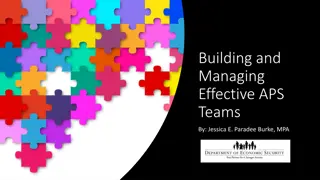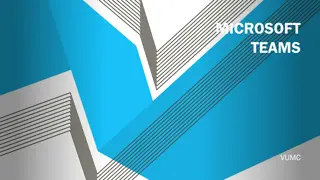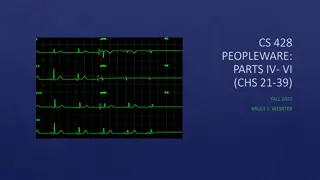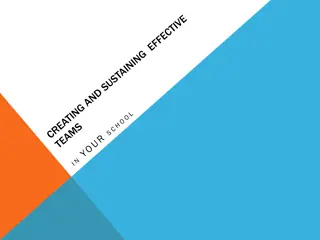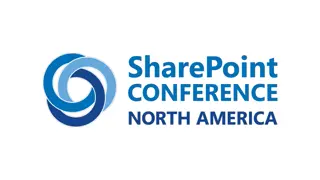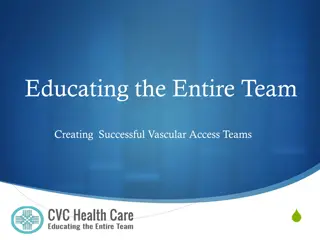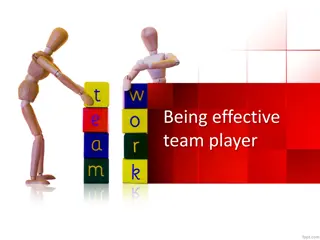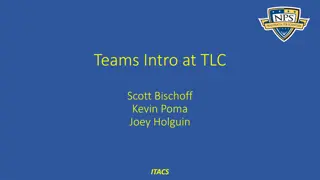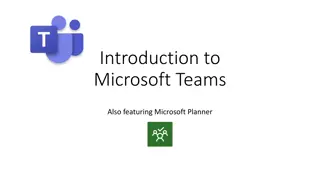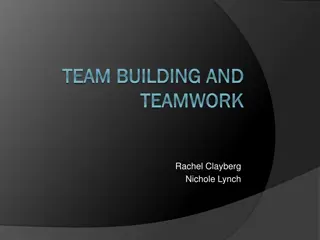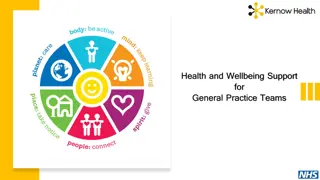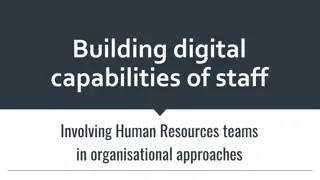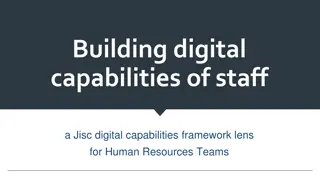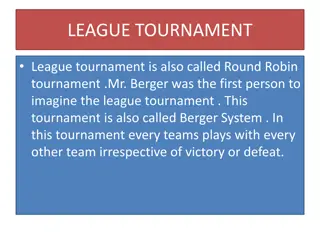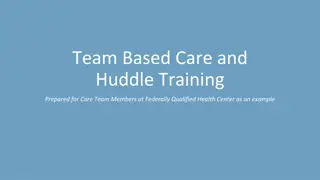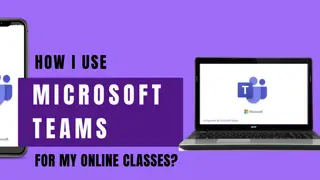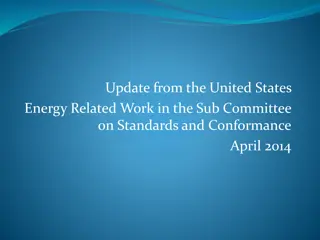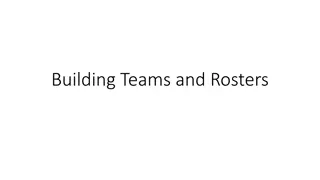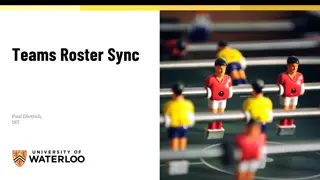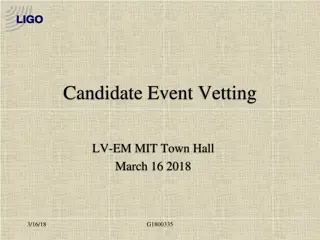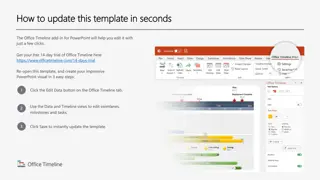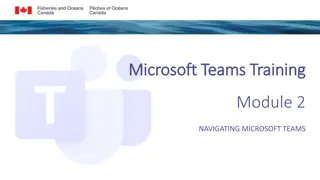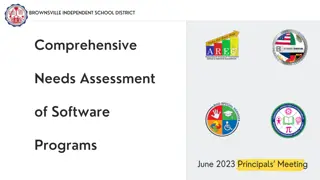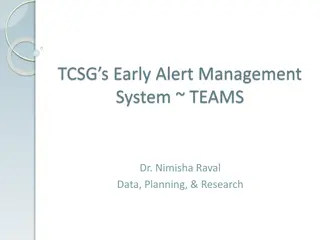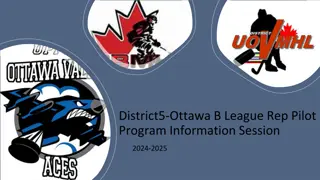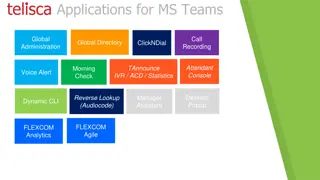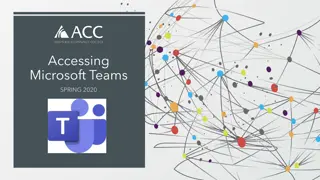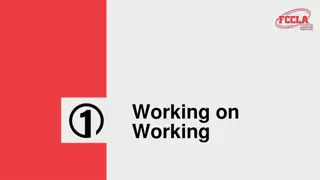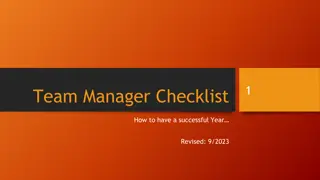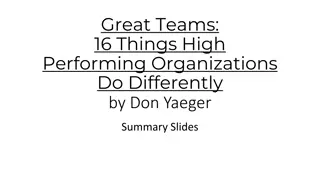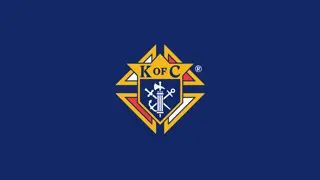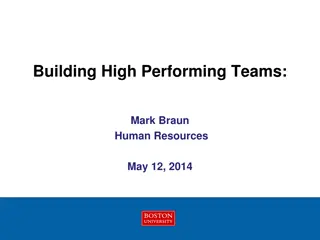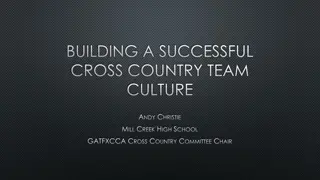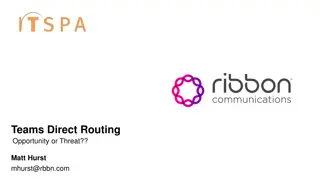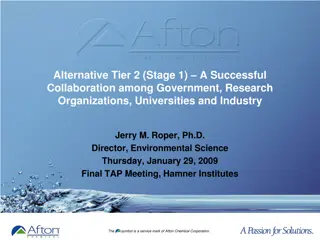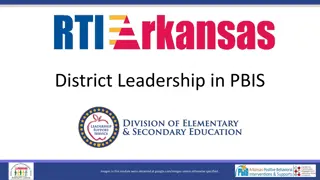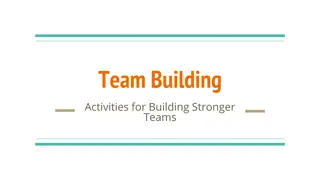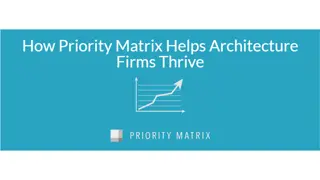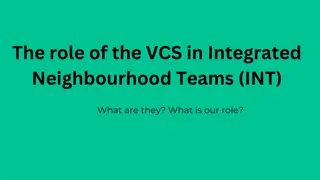Enhancing Team Performance and Collaboration: A Comprehensive Guide to Building Successful Teams
This comprehensive guide explores the fundamental aspects of team building and teamwork, offering insights on creating effective teams, enhancing performance, and fostering a collaborative environment. Covering topics such as team dynamics, leadership, conflict resolution, and diversity, it provides valuable strategies for improving team success and achieving organizational goals.
Download Presentation

Please find below an Image/Link to download the presentation.
The content on the website is provided AS IS for your information and personal use only. It may not be sold, licensed, or shared on other websites without obtaining consent from the author. Download presentation by click this link. If you encounter any issues during the download, it is possible that the publisher has removed the file from their server.
E N D
Presentation Transcript
By Pramod Thapa Thomas Rausch Jayakrishna Bobba
Overview of Team Building and Teamwork Building Teams and Making Them Work Four-Step Approach to Team Building Character Traits and Teamwork Teams Are Not Bossed They are Coached Handling Conflict in Teams Structural Inhibitors of Teamwork Rewarding Team and Individual Performance Recognizing Teamwork and Team Players Leading Multicultural Teams
1. What is a Team 2. Rationale for Teams 3. Learning to Work Together 4. Team Excellence and Performance
T- Talent E- Enthusiasm A- Accountability M- Management W- Work-able O- Openness R- Respect K- Keenness
Satisfy the human social need Two or more are better than one Performs better performance Multiplies the potential of individual members
Personal identity of team members Relationship among team members Identity within the organization
Mutual Support Challenge Singleness of purpose Trust Participation
Makeup and size of Teams Choosing Team members Responsibilities of Team Leaders Other Team members Creating a Team s Charter Developing Collegial Relationships Promoting Diversity in Teams
Assess Plan Execute Evaluate
What are the factors that affect both the groups? Honesty Selflessness Dependability Enthusiasm Responsibility Cooperativeness Initiative Patience Resourcefulness Punctuality Tolerance Perseverance
Clearly defined charter Team development and team building Mentoring
What should be the resolution strategies? Plan and work to establish culture Clear idea about decisions of a team or individual Encourage healthy, productive, competition Good leadership Direct Approach, Bargaining, Enforcement, Retreat, and De-emphasis
Unit Structure Product and process orientation is better. Accountability Change accountability to customers, not managers Unit Goals Goals must be team goals Responsibility Employees held responsible to team success
Compensation and Recognition Give credit and benefits to team Planning and Control Teams and managers work together
Reward both the individual and team Total Compensation Reward at three levels Base individual compensation Individual incentive compensation Team-based incentive compensation
Decide what performance to measure Growth of marketing business Determine how to measure performance Number of new clients Indentify rewards to be offered Monetary per new client Integrate related process Be sure reward system fits with existing system
Intrinsic & Extrinsic motivation Extrinsic motivation: money, vacation time, movie tickets Intrinsic motivation: Helping each other, learning new skills. To identify intrinsic motivators: ASK! Different for each employee Build rapport
Incentives must be sought after by individual and team. MBTI typing. Thinkers v. Feelers. All employees want recognition after a job well done.
Culture related challenges: Communication Attitudes Authority Decision making
Adaptation Accommodating cultural differences Record problems/develop solutions Structural intervention Moving team members Managerial guidance Manager sets ground rules for interaction Exit Unhappy team members allow to leave Last resort


